Music Theory Secrets
Music Secrets for the Starting Musician
Music Secrets for the Starting Musician is designed for instrumentalists, singers, conductors, composers, and other instructors and professionals in music seeking a quick set of pointers to improve their work as performers and creators of music. Easy to use and intended for the starting musician, contributions to Music Secrets meet the needs of beginners. It is the perfect resource for teaching students what they need to know in order to reinforce a set of best practices on their way to becoming professional musicians.
Music Theory Secrets: 94 Strategies for the Starting Musician , by Brent Coppenbarger, 2014
Music Theory Secrets
94 Strategies for the Starting Musician
Brent Coppenbarger
ROWMAN & LITTLEFIELD
Lanham Boulder New York London
Published by Rowman & Littlefield
A wholly owned subsidiary of The Rowman & Littlefield Publishing Group, Inc.
4501 Forbes Boulevard, Suite 200, Lanham, Maryland 20706
www.rowman.com
16 Carlisle Street, London W1D 3 BT, United Kingdom
Copyright 2014 by Brent Coppenbarger
All rights reserved . No part of this book may be reproduced in any form or by any electronic or mechanical means, including information storage and retrieval systems, without written permission from the publisher, except by a reviewer who may quote passages in a review.
British Library Cataloguing in Publication Information Available
Library of Congress Cataloging-in-Publication Data
Coppenbarger, Brent.
Music theory secrets : 94 strategies for the starting musician / Brent Coppenbarger.
pages cm. (Music secrets for the starting musician)
Includes bibliographical references and index.
ISBN 978-1-4422-3323-2 (hardcover : alk. paper) ISBN 978-1-4422-3324-9 (ebook)
1. Music theory. I. Title.
MT6.C7825 2014
781dc23 2014013724
 The paper used in this publication meets the minimum requirements of American National Standard for Information SciencesPermanence of Paper for Printed Library Materials, ANSI/NISO Z39.48-1992.
The paper used in this publication meets the minimum requirements of American National Standard for Information SciencesPermanence of Paper for Printed Library Materials, ANSI/NISO Z39.48-1992.
Printed in the United States of America
For Sonja, Ethan, and Rebecca
Preface
Rhythms, melodies, and harmonies are the building blocks of music. This book will help musicians understand and remember the key elements of pitch, rhythm, scales, key signatures, and harmony. With more than eighteen years of experience teaching music theory, I have developed a number of teaching and memory strategies designed to assist in the foundations of music theory. This book is designed to be a handbook for performers, teachers, students, novices, and amateur musicians.
Chapter 1 explains how to determine pitch, use meter, and count rhythms in both simple and compound meter. Chapter 2 deals with major scales and major key signatures, whereas chapter 3 deals with minor scales and minor key signatures. Chapter 4 explains other types of scales, including modes.
Chapter 5 presents scale degree names and intervals. Chapter 6 describes triads and chapter 7 seventh chords. Chapter 8 begins a discussion of roman numeral analysis, which continues in chapter 9 with inversions and figured bass.
Chapter 10 presents some of the more common nonchord tones, and chapter 11 describes the use of syllables in solfge singing. This chapter also contains five pages of sight-singing illustrations in various clefs and keys. Some instrumentalists might want to use these to practice transposition where appropriate in clef and range. Chapter 12 shows different techniques for transposition. Chapter 13 concludes with an example of a complete analysis of a four-part work using the techniques provided throughout the previous chapters.
Acknowledgments
I wish to thank my parents, both of whom were university music professors, for instilling in me a love for music. That is, not only for giving me a love of musics aesthetic value but also for providing me with an intellectual curiosity as to why music is unique to the human race. Special thanks also go to my wife and best friend, Sonja, for editing the text, and to my children, Ethan and Rebecca, for giving up some jump on daddy playtime.
Prelude
Over many years of teaching, I have seen a number of students enter the university as music majors and struggle with music theory, or even drop their music major because of the challenges of music theory. Some of these students were very talented in their area of specialization, be it instrumental or vocal. They were gifted students capable of being successful musicians if it were not for their difficulty with music theory, and I found it very sad that they were not able to fulfill their potential. Most, with some extra time to learn the material, could have made a career in music, but due to the high cost of education today the time needed to catch up was simply too costly. Students who fall too far behind and have to repeat a theory class end up paying for an extra year in college, which also costs them a year of career time. Vocalists with a great voice are of little use as musicians if they cannot read music because they have always learned their music by rote. These vocalists will find it difficult to learn new music and impossible to teach new students.
Pianists have always seemed to be better at music theory. This is because most piano method books incorporate some music theory into their texts, whereas most instrumental methods, woodwinds and brass at least, do not. It is the nature of a keyboard instrument; when you play a chord, you ask your teacher, What is a chord? Now you are talking music theory. From the age of six, pianists have been seeing, playing, and hearing music as harmony.
Without music theory there would be no musical compositions for musicians to play. Music theory is as basic to music as writing is to reading. Having a basic background in music theory helps the musician with musical interpretation, musical style, improvisation, composing, cultural musical styles, historical performance practices, phrase development, musical form, and so on. Music theory is as important to musicians as legs are to sprinters.
As a teacher, I have developed various tricks and mnemonics to help students learn this vital material, and I have discussed these tricks in class and distributed them as handouts to my students. This book is a compilation of my most effective descriptions, explanations, mnemonics, and tricks. I have written what I believe is a commonsense approach to what can be for some a complex and confusing subject. Most musicians know some music theory through practice and familiarity with their instruments. If you play or sing a scale, you know some music theory. All you have to do is learn the names for the musical structures and forms that are already familiar to you.
With Music Theory Secrets , I have approached the subject from the very beginning. I have attempted to use memory devices and little tricks to assist you in remembering information and understanding concepts in what I hope is a little lighter character than you may find in a textbook. I thought there was a need for a music theory text that did not read like a classroom textbook. I wanted a book that started out with the very basics, so someone who did not know any music theory or even know how to read music could learn from it. Yet I did not want a book that was so basic it would be boring for those who progressed quickly or who had music training and wanted some more advanced knowledge. Therefore, I designed a book that, although it starts with the very basics, does advance to a point equivalent to a couple semesters of college-level music theory training. In this manner, you can continue as far into the book as your need or want for knowledge allows. Novices might want to read only the first half the book, whereas advanced students might find information that is more challenging in the last half of the book. I believe I was able to establish a balance that gives a little something to everyone.
Next page
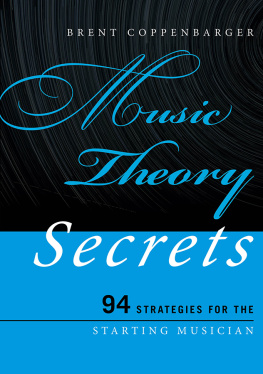
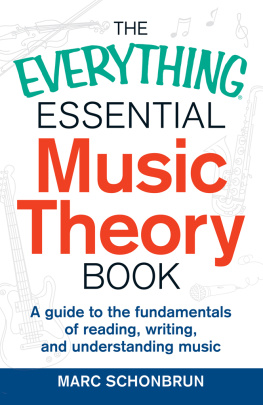


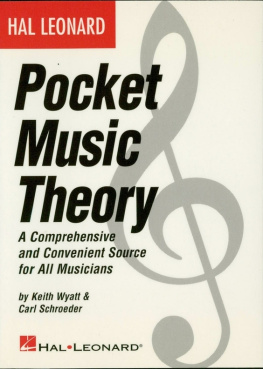
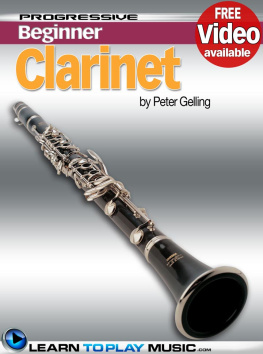


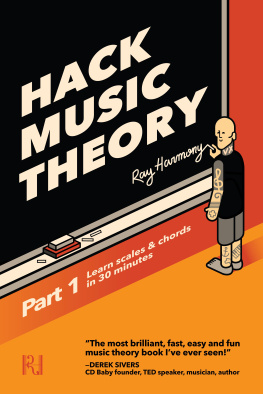
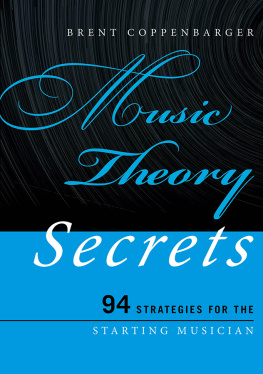
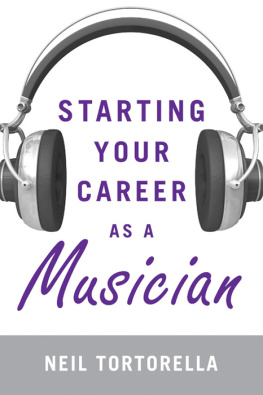
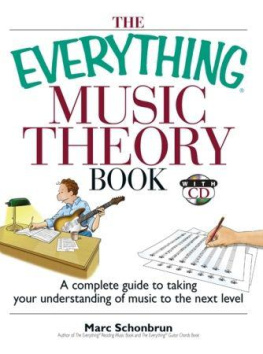
 The paper used in this publication meets the minimum requirements of American National Standard for Information SciencesPermanence of Paper for Printed Library Materials, ANSI/NISO Z39.48-1992.
The paper used in this publication meets the minimum requirements of American National Standard for Information SciencesPermanence of Paper for Printed Library Materials, ANSI/NISO Z39.48-1992.